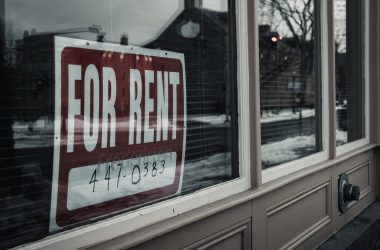Oregon’s housing shortage is worse today than it was before the start of the Covid pandemic, a state economist told lawmakers Wednesday during a hearing to discuss ways of easing the statewide crunch.
The shortage of affordable housing has a big impact: Oregon has one of the highest homeless rates in the U.S., with more than 14,600 people needing stable housing in 2020, a rate of 2.5%. Only Washington state, California, Texas, Florida and New York had higher rates, according to the U.S. Interagency Council on Homeless.
Josh Lehner, from the Oregon Office of Economic Analysis, told members of the House Interim Committee on Housing on Wednesday that the increased gap isn’t so much because of a big boom in population; in fact, he said, Oregon’s population has stayed relatively steady during the pandemic.
But the number of households in Oregon increased between 2019 and 2021, Lehner said.
“People broke out on their own, they dropped roommates, they wanted a little more space, they didn’t want to be around more people when there’s a deadly contagious virus going around,” he said. Household size dropped during the pandemic, but the number of households boomed – and the number of new housing units did not meet the increased demand.
Lehrer listed items that he said would help close the gap – increasing land availability, turning that land into buildable lots more quickly, allowing more units to be built, and decreasing or stabilizing development costs.
But he focused on another issue: increasing the construction workforce, in both the private and public sectors.
“If we want to build more units, we have to have more workers,” he said.
In fact, he said, Oregon needs 13,000 more construction workers per year to help close the housing gap. Finding those workers in a tight labor market will be challenging, he said.
But city and county planning departments also will need 400-500 additional public sector workers per year to approve, permit and inspect these additional housing units, he said.
And Tamra Mabbott, the planning director of eastern Oregon’s Morrow County – with a population of about 12,000 – urged lawmakers to help smaller communities with their planning efforts.
Other speakers at Wednesday’s hearing touched on different areas of the housing crunch, such as barriers to developing housing, the importance of preserving existing affordable housing, and programs meant to aid people who are unsheltered.
Deb Flagan of private builder Hayden Homes and Emily Reiman of DevNW, an Oregon nonprofit that develops affordable housing and rentals, noted how housing is unaffordable for many Oregon residents.
Flagan said Hayden’s business model is to build houses that can be purchased by households making 100% to 120% of average median income. In Oregon, the median household income is $91,800, and a household making that amount can afford a $402,933 house, she said. But the median house price in Oregon is $512,100 – a gap of about $110,000. Increases in interest rates only widen the gap.
Added Reiman: “We have a very fundamental disconnect between what it costs to build even a modest new unit of housing, be it a single-family or an apartment, and what the majority of Oregon residents actually can afford.”
She said DevNW can build a modest 1,000- to 1,200-square foot for about $400,000. But in Lane County, for example, a family with a median income only can afford a $240,000 mortgage.
She urged state efforts to create realistic estimates of the housing need for potential homeowners in different income brackets.
“Once we know the need across income levels, how do we realistically increase the supply of homes that actually meet the affordability needs of Oregon families? And how (can) we be honest about the level of subsidy that’s going to be needed to produce the right number of homes at the right income levels so that families in their communities can afford their rent or mortgage? … This is going to be a critical conversation for years to come.”
Need for partnerships
A common theme throughout Wednesday’s hearing involved the importance of creating partnerships among state and local governments, nonprofit agencies and private builders. Speakers at the hearing said these partnerships could help lower barriers to affordable housing.
But, noted Rebecca Lewis of the Institute for Policy Research and Engagement at the University of Oregon, private builders and government officials have different opinions about which barriers are most important.
She pointed to a survey suggesting, for example, that 82% of private builders believe the time required to get necessary permits is a major barrier, while only 15% of government officials thought the same.
Other speakers, such as Sean Edging of Oregon’s Department of Land Conservation and Development, urged increased coordination between state agencies working on the issue and local governments. A set of draft recommendations from the department calls for greater partnership between governments and developing “creative, flexible investment sources” to help develop housing projects that the market will not create on its own.
He said the current system, in which communities take stock of buildable land inside their urban growth boundaries and then determine the housing capacity on that land, has led to “decades of underinvestment and a lack of comprehensive response to housing production.” What’s required, he said, is a shift in focus to start thinking “about the full scope of barriers to housing development.”
The committee also heard about programs to serve the estimated 16,000 people in Oregon who are unsheltered. Kenny LaPointe, the executive director of the Mid-Columbia Community Action Center, said efforts are underway to create a facility in The Dalles that would combine 36 beds of noncongregate shelter with a multi-agency service center for houseless and low-income community members. The project, which could serve as a model for other communities, has earned support from state and local governments and private parties, he said.
Project Turnkey
Megan Loeb of the Portland-based Oregon Community Foundation talked about Project Turnkey, which has provided funding to turn underused hotels and motels throughout the state into shelter for the homelessless. The project has added 867 units of shelter statewide. A second round of funding for the project has attracted “an extraordinarily high number of high-quality applications,” Loeb said. “We are not going to be able to fund all the applications.”
The committee also heard about the importance of preserving existing affordable housing, such as mobile home parks or apartment complexes with rental guarantees. It’s a challenge, said Bill Van Vliet of the Network for Oregon Affordable Housing for unsheltered people: “We can’t make progress on affordable housing if we’re losing units as fast as we’re building them.”
The committee’s final witness on Wednesday, Heidi Johnstone, lives in an apartment complex in Tigard that legally is transitioning to market-rate rents – a transition she said will force her and many of her neighbors to move out of the complex and possibly become houseless.
“Who would imagine that housing would become so unaffordable in our lives?” she asked.
This story originally appeared in the Oregon Capital Chronicle and is republished here under a CC BY-NC-ND 4.0 license. Read more stories at oregoncapitalchronicle.com.






